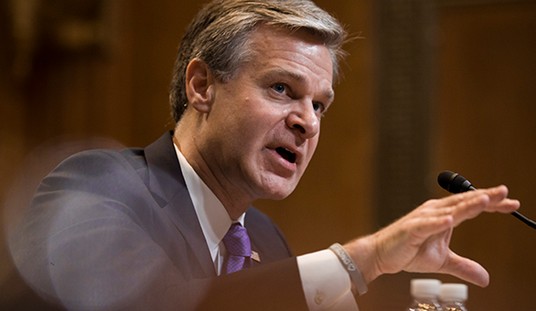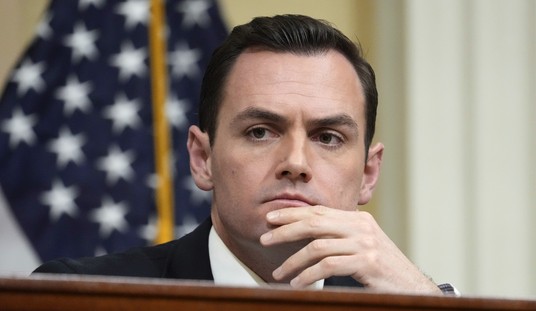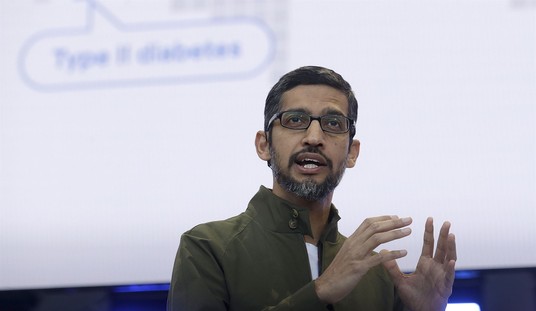Missouri Highway Patrol Capt. Ronald S. Johnson said in a briefing just before 3 a.m. that police began using smoke bombs early this morning after learning that men were on the roof of Red’s BBQ. Police were going to walk West Florissant Avenue in teams, but that plan changed with the report of men on the roof.
Authorities then heard that there was a shooting victim near Red’s, a police car was shot at, and a man stood in the street with a handgun.
Tear gas and smoke bombs were used to disperse a group of defiant protesters. By the time officers moved protesters from the scene, the shooting victim had been taken by private vehicle to a hospital, Johnson said. He did not know whether the victim was a protester.
Chuck Canterbury, president of the Fraternal Order of Police, a union that represents more than 325,000 officers nationwide, defended the actions of the Ferguson and St. Louis County police. He said he had spoken with officers there who told him they have been responding to violence from people who have looted, started fires and thrown rocks and bottles at them…
“You don’t retreat,” said Canterbury, a 26-year veteran of the Horry County Police Department in Conway, S.C. “We have to protect property and we have to protect people.”
Much of the high-tech gear seen in Ferguson is to protect police, he said.
The military appearance is “more a perception than reality,” he said. “They are two different things. The military is trained to engage and law enforcement is trained to defuse.”
We’ve been told for days now that that the reason there was rioting in Ferguson is because protesters were “provoked” by militarized police. I agree with some of my colleagues that cops should look like cops (see Kevin’s excellent piece here), and it is deeply unsettling to see police atop armored vehicles training weapons on protesters. On the other hand, there is no justification to throw projectiles at police, no matter what kind of uniforms they are wearing or what kind of vehicles they have, nor is there any justification for destroying or stealing other people’s property.
Now, we’ve had a real world test of the “provocation” thesis. The highway patrol came in with a much softer and friendlier posture and it seemed to work Thursday night in reducing tensions, but it didn’t last night. Shamefully, the cops evidently stood by while looters destroyed and stole things. We’ve heard an awful lot about the function of police in our society the last few days. Well, how about this as a function? Protect the property of innocent people.
Sonny Dayan, owner of St. Louis Cordless Communications, tells National Review Online police prevented him from returning to his business while it was being looted and the police did nothing to stop the crime.
Dayan says police would not let him walk down the street to his business, a cell phone service and supply store, despite letting looters run through the streets and into stores. “As far as I know my business is burning down, I’m getting calls from the alarm left and right, you got to get here, you got to get here,” he says. “They [the alarm company] called the police. The police said, “We cannot come help you because it’s not our job anymore. We got kicked out.” ”
He says police told him they would call him when it was safe to return to his store, but never did. When he did make it back to his store a few hours later on Saturday morning, he found several Ferguson residents standing guard and waiting to help him clean up. He says police came into his store on Saturday to make sure he was OK, but offered no explanation as to why they would not protect his store. “My store or my business, it’s nothing that they worry about,” he says. “It’s the last thing they worry about.”
In rural western Maine, the Oxford County Sheriff’s Office, which had not reported a murder in more than 20 years, asked for an MRAP. Cpl. George Cayer, wrote in his request that Maine’s western foothills face a “previously unimaginable threat from terrorist activities.”
In Orange County, Florida, masked officers in tactical gear helped state inspectors raid barber shops in 2010 to find people cutting hair without a license. Using a mini battering ram and pry bar at times, police arrested dozens of people. Officials said they found illegal items such as drugs and a weapon.
McSweeney said it’s hard to argue that police shouldn’t use the best equipment available.
“It’s tempting to say, ‘Shouldn’t we wear these things? Shouldn’t we approach this as if we could get shot?'” he said. “How do you say no to that question?”
The limits of the Parker approach became apparent during Watts, which started over a traffic arrest and escalated into rioting that claimed 34 lives. Parker himself called for support from the California National Guard. Activists found soldiers patrolling the streets of Los Angeles to be a fitting symbol. They had long considered the LAPD an occupying army. Parker had the opposite reaction: He wanted those toys for his officers…
They’ve also been used as crowd control, even during peaceful demonstrations, which is what happened in Ferguson. Some consider this a misapplication of SWAT, but the real problem is deeper: This was its original function, developed in Delano, Calif., by police looking to control—some would say intimidate—Cesar Chavez’s striking United Farm Workers. It was Daryl Gates, a Parker protégé, who liked what Delano was doing. By 1967, Los Angeles had its own SWAT units.
After the department’s SWAT team prevailed in violent confrontations with Black Panthers and SLA guerrillas—and with help from a Hollywood television series named “S.W.A.T.” and generous Justice Department grants—thousands of U.S. police departments began buying the high-powered weapons, body armor, and other SWAT accoutrements.
To be clear: I cheered Paul’s comments, I support most of the reforms under consideration, I want lower incarceration rates and fewer people dying when a no-knock raid goes wrong. But there may be trade-offs here: In an era of atomization, distrust and economic stress, our punitive system may be a big part of what’s keeping crime rates as low as they are now, making criminal justice reform more complicated than a simple pro-liberty free lunch.
But the military hardware issue, the BearCats and grenade launchers and what we’ve seen unfold in Ferguson — that does seem easy, uncomplicated, clear. Crime rates rise and fall, but crime-fighting is a constant for police; dealing with terrorism and insurrection, however, decidedly is not. Yet for decades we’ve been equipping our cops as though the Symbionese Liberation Army were about to come out of retirement, as if every burst of opportunistic lawlessness could become another Watts, as though the Qaeda sleeper cells we feared after 9/11 were as pervasive in life as they are on “24” or “Homeland.”
And this is where it’s ended: with a bunch of tomfool police playing soldier, tear-gassing protesters, arresting journalists and turning Ferguson into a watchword for policing at its worst.
Time to take their toys away.
To use a recent example, if you or I had gunned down an unarmed man on a street at high noon how long would it be before you were identified as a suspect… which by the way is how the officer in Ferguson should be treated? I’m guessing nanoseconds would be the answer and how long before the police started leaking their suspicions as facts? Again nanoseconds. The officer in Ferguson was only identified after six days and then begrudgingly…
And along the way we are served up the usual pap about how hard a police officer’s life is and how we should respect the police. Here is a newsflash. No one in this nation is drafted to be a policeman. Not only is it a choice, it is a choice that requires the individual to compete for a limited number of positions. If the job is too hard, they should find something else to do that doesn’t involve carrying a gun and brutalizing the citizenry. And respect is a two-way street. You gotta give it to get it.
The real question we should be asking is not whether cops need MRAPs and drones, they don’t. The real question is why American police on American streets have rules of engagement more liberal when it comes to the use of deadly force than those a soldier in Afghanistan works under? If an Afghan was killed under the same circumstances as Michael Brown, the soldier involved and probably his immediate supervisor would be facing a court martial. If you doubt the degree to which our police are militarized ponder that question.
The different uniforms are meant for different kinds of policing: The traditional blue coat is for the policeman who walks a beat, and the ridiculous stormtrooper suits are for those who roll through in an MRAP.
Which sort of policing would you prefer?
People in places such as Ferguson, Mo., often talk about the police as though they were an occupying force, and there is, in Ferguson and in many other places, a strong racial component. During my time in Philadelphia, the city had a black mayor, a black police commissioner, and a heavily black police force, and the city’s worst crime was concentrated in two black neighborhoods. Police innovations such as sending extra patrols to schools at dismissal time were criticized by community leaders who complained that the police were “targeting” black neighborhoods. Which, of course, they were: That’s where the crime was. The police were of course in an impossible position: On the one hand, they were regarded as unwelcome intruders; on the other, they could not simply abandon those neighborhoods.
But they might seem a little bit less like an occupying force if they didn’t dress like one. If they weren’t armed like one. If they didn’t roll through like one. If they weren’t being told, and telling themselves, that they are “at war.”
And though I recognize that the police have a difficult task, they might also get a little more support from communities such as Ferguson if they were doing their job. Peel again: “Recognize always that the test of police efficiency is the absence of crime and disorder, and not the visible evidence of police action in dealing with them.”
That sound like Ferguson, Mo., to you? Or Chicago? Or Detroit? Or Los Angeles?
[W]hen the police are dressed like combat troops, it’s not a fashion faux pas, it’s a fundamental misunderstanding of who they are. Forget the armored vehicles with the gun turrets, forget the faceless, helmeted, anonymous Robocops, and just listen to how these “policemen” talk. Look at the video as they’re arresting the New York Times and Huffington Post reporters. Watch the St Louis County deputy ordering everyone to leave, and then adding: “This is not up for discussion.”
Really? You’re a constable. You may be carrying on like the military commander of an occupying army faced with a rabble of revolting natives, but in the end you’re a constable. And the fact that you and your colleagues in that McDonald’s are comfortable speaking to your fellow citizens like this is part of the problem. The most important of the “nine principles of good policing” (formulated by the first two commissioners of the Metropolitan Police in 1829 and thereafter issued to every officer joining the force) is a very simple one: The police are the public and the public are the police. Not in Ferguson. Long before the teargassing begins and the bullets start flying, the way these guys talk is the first indication of how the remorseless militarization has corroded the soul of American policing.
Which brings us back to the death of Michael Brown. Let’s assume for the sake of argument that everything the police say about this incident is correct. In that case, whether or not the fatal shooting of Mr Brown is a crime, it’s certainly a mistake. When an unarmed shoplifter* in T-shirt and shorts with a five-buck cigar box in one hand has to be shot dead, you’re doing it wrong…
A startling number of American readers wrote to say, with remarkable insouciance, that the US could not afford the luxury of First World policing. Large tracts of America had too many illegal immigrants, drug gangs, racial grievances, etc. Maybe. But the problem is that, increasingly, this is the only style of law enforcement America’s police culture teaches – not only for the teeming favelas, but for the leafy suburbs and the rural backwaters and the college-town keg party, too.
Via Reason TV.








Join the conversation as a VIP Member